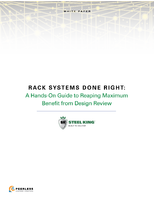Western Digital Uses RFID Seals to Streamline Customs
The manufacturer's hard drives are moving through government inspections more quickly and efficiently thanks to an RFID-based security and verification system.
April 20, 2007-In Thailand, computer component manufacturer Western Digital is enjoying faster customs clearance for the goods it ships from manufacturing facilities in Thailand to points in the United States, thanks to RFID-based electronic seals designed to secure and verify the contents of containers moving through Thai Customs' entry and exit portals.
This RFID deployment-part of the Secure Free Zone Project, run by Thailand's Customs Department-is designed to stimulate economic growth and development in Thailand by offering tax and duty discounts and benefits to manufacturers with operations in the country. To design and deploy the RFID system, Western Digital worked with Thai Customs, as well as the Thailand-based TIFFA EDI Services Co., which is providing electronic data exchange services, and Savi Networks, which is supplying the RFID technology.
The ST-662 Savi E-Seal
During the last five months, Western Digital and Thai Customs have monitored and validated, in near real time, more than 17,000 trips of RFID-sealed truck trailers transporting computer hard drives from manufacturing and distribution facilities through customs inspection points installed in the Nava Nakorn Industrial Estate and the BangPa-In Industrial Estate. These estates are duty-free zones set up to stimulate import-export business in Bangkok.
After Western Digital warehouse personnel load a freight truck with the company's products, an authorized manager validates the contents, closes the trailer door and affixes an ST-662 Savi E-Seal to the freight truck closure right before it departs for one of the two RFID-enabled Customs inspection points. The ST-662 Savi E-Seal combines an E.J. Brooks seal with a Savi 433 MHz active tag compliant with the ISO 18000-7 standard.
As the truck departs the warehouse, a fixed-position Savi ST-652 interrogator, mounted at the exit gate, commissions the tag by encoding it with a shipment ID associated with the shipment order, routing data and other pertinent logistics information in the Savi Site Manager software running at the warehouse. Western Digital then uses TIFFA's Web-based data exchange service to transmit this tag ID and freight data, along with customs declarations documents, to the Thai Customs agents at the Nava Nakorn or BangPa-In checkpoints.
As the readers encode the tag, they also activate the e-seal, which monitors the integrity of the bolt screwed into the tag to hold it in place on the freight container's door. If someone unscrews this bolt while the e-seal is activated, the tag will transmit an alert the next time it enters an interrogation field. This alert includes a timestamp showing when it detected the break in the electronic seal. To remove the tag without breaking the seal, Western Digital employees can use a handheld reader to transmit a password to the tag and deactivate the e-seal. Employees can then remove the bolt by turning a screw at the base of the seal.
When customs agents receive the e-sealed container, a Savi ST-652 reader installed at the entrance gate reads the tag ID. This calls up the shipment record in the Savi Site Manager software running at the inspection site. If anyone has opened or tampered with the e-seal without first transmitting a valid password to the tag, the customs agents will see a red alert code in the Site Manager record. Furthermore, if the truck is arriving later than scheduled, but the e-seal is still intact, the customs agents will see a yellow alert code, signifying the truck might have made an unscheduled stop. Customs agents who see either code can then divert the container for inspection. On the other hand, if the e-seal is intact and has not been tampered with, the agents can approve the shipment and send confirmation back to Western Digital, using the TIFFA data exchange system.
Previously, customs agents used a completely manual, paper-based system for inspecting shipments. Those steps have since been removed, though agents may still select freight containers for inspection at random.
According to Savi, this container-verification system has reduced by nearly one half the number of steps personnel must take to move shipments through the two customs checkpoints. The company says it has cut labor costs by 25 percent. Before deploying the RFID-based container security and verification system, Western Digital's shipment records were 70 percent accurate; now, they are 100 percent accurate under the new system, indicating all errors were due to manual record-keeping.
In the coming months, Western Digital and Thai Customs plan to extend the e-seal-based inspection process to include checkpoints at Bangkok's Don Muang International Airport. In the future, Western Digital hopes to work with its shippers and other supply chain partners so they can utilize the Savi e-seal and Savi Site Manager software to streamline freight receiving and processing systems, while keeping the containers secure.




